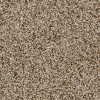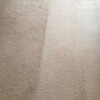
Hardwood flooring comes as strips 1-1/2 to 2-1/2 inches wide or planks 4 to 8 inches wide. Domestic species include oak, maple and black walnut. Regional varieties, such as pecan, chinquapin and mesquite, are not widely distributed but offer distinctive grain patterns. The availability of exotic species of hardwoods varies with market conditions, and popular imported varieties include Brazilian cherry, purpleheart, and African pedauk. To make sure the wood flooring you buy is harvested from sustainable, managed forests, look for certification from the FSC (Forest Stewardship Council) and the SFI (Sustainable Forest Initiative).
Vinyl products are backed with a layer of felt. Cushioned vinyl is backed with a thin layer of foam that offers an extra measure of comfort and safety. In general, a thicker vinyl surface means better quality and higher price. Thicker vinyl can have a textured surface that looks like real stone and wood. Vinyl flooring has a wear layer on its upper surface that helps resist stains and scratches. The best vinyl products provide warranties on the wear layer of as much as 15 years, and you can expect good-quality vinyl to last 20 years.
Most carpeting is made by pulling the fibers through a woven backing; then additional layers of backing are glued on to provide strength and thickness. A carpet pad adds cushioning and helps prolong the life of the carpet. Indoor/outdoor carpeting withstands weather and usually is installed without a pad. Some carpets use a rating system that indicates the product's ability to withstand wear and tear. Found on the carpet label, the system is graduated from 1 to 5, with 5 being the best. A rating of 3 to 4 is considered normal.
Similar Businesses







